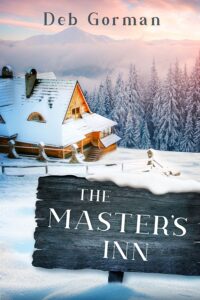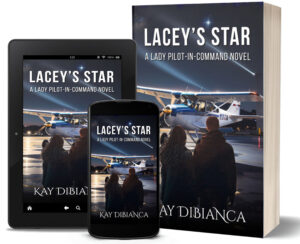 In 19th century Spain, a Seville butcher named Juan went on hunting trips with his godfather, Marquez, every Saturday. The two normally returned on Monday.
In 19th century Spain, a Seville butcher named Juan went on hunting trips with his godfather, Marquez, every Saturday. The two normally returned on Monday.
One November morning, Juan came back alone. Marquez’s wife asked about her husband, but believed Juan when he said they’d separated during the hunt and thought Marquez had beat him home.
“He must be coming back any time now,” he said.
With the day bleeding into night and still no sight of Marquez, his wife grew concerned. That evening, his dog, Como tu, returned alone. Como tu and Marquez were inseparable. So, the wife asked his faithful companion about his father’s whereabouts. Agitated, the dog grabbed her dress in his teeth and tried to drag her out of the house.
Why the wife paid no attention to Como tu’s strange behavior was anyone’s guess. Instead, she thought maybe Marquez went to visit Juan. In a desperate attempt to find him, she and Como tu went to his house. When Juan answered the door, Como tu dove for his throat. It wasn’t normal behavior. The dog never had a problem with Juan before.
After the wife pulled Como tu off Juan, he falsely claimed the dog must have rabies and should be shot, but she decided to go to the police station instead. Como tu was good as gold at the police station, until Juan arrived. The moment Como tu heard his voice, he turned aggressive. At first, the police commissioner thought Juan might’ve abused Como tu. When the wife told the story of her missing husband, she included the dog’s strange behavior.
Two days later, she took the dog for a walk in the area where her husband had gone hunting. At a cliff that overlooked the river where folks customarily threw garbage and dead animals (*cringe*), Como tu again tugged her dress, howled, then pulled her toward the cliff’s edge. Because of the stench of garbage — and despite Como tu’s best efforts — they headed home.
As they passed the butcher shop, Como tu barged in, leaped up on a table, and again tried to attack Juan.
More than a little suspicious now, Marquez’s wife returned to the police station and told an officer what happened with the dog. The police officer said nothing at the time. However, the following morning, he went to the cliff with four pall bearers and saw Juan and two other men at the bottom, tearing bloody clothes off a corpse.
The officer arrested all three men.
Officials ID’d the body as Marquez. The officer found entry wounds from a full load of buckshot to the face and left side of the head. The back of the skull had more damage, most likely crushed by the butt of a shotgun. The two accomplices confessed. Juan had offered money to help him remove the bloody clothes and toss the body into the river.
With no way out, Juan confessed to killing his godfather after a fight over who shot a specific partridge. As the fight intensified, both hunters loaded their shotguns and threatened each other. Angry and drunk, Juan claimed to fire at Marquez to disable him, but he finished the job by caving in the back of his skull with the butt of his shotgun.
The court found no evidence of premeditation and some evidence to support self-defense. Thus, Juan received five years in the galleys while the two accomplices got six months in prison for trying to cover up the murder.
If it weren’t for Como tu, Marquez’s wife would never have known what happened to her husband.
ANOTHER FURRY HERO

white labradoodle like Titan
A case made national headlines when a loyal Labradoodle named Titan helped solve the murder of his twenty-six-year-old mom, Mandy Rose Reynolds, who was shot and burned beyond recognition in a field in Robinson, Texas.
Police found the charred remains on April 5, 2023. Titan barked frantically and refused to leave the area. He also evaded capture.
Even after the coroner removed Reynold’s body the following morning, a good Samaritan found Titan sitting in the same spot and called Robinson Animal Control, who scanned the dog for a microchip. That led to the owner’s name: Mandy Rose Reynolds.
Now with a starting point for the investigation, the medical examiner identified the remains as Mandy Reynolds through her dental records. The official record shows she died from a gunshot wound to the head, and a .380 bullet was recovered from her remains.
Robinson police then learned Mandy Reynolds resided in San Marcos, Texas. San Marcos police were contacted and went to her home but found it empty, with all her possessions removed and her black Honda Accord missing.
A license plate database revealed the car was somewhere in Wichita.
On April 8, 2023, Wichita police spotted the vehicle. The pursuit lasted almost thirty minutes and reached speeds of over 100 mph.
The Accord crashed into another vehicle, and Derek Daigneault — Mandy Rose Reynolds’ cousin— fled the scene and “hid on a shelf behind canned goods” at a local grocery store. Police found a .380 handgun on the driver’s side floorboard.
Meanwhile, back in Robinson, police determined the body had been burned in a large plastic storage container, along with a fired .380 shell casing.
Surveillance video from a Walmart in San Marcos showed Daigneault buying an identical storage container, a shovel, and a gas can on the morning of April 4, 2023. Video evidence also showed him leaving the store in Mandy Reynolds’ car, with Titan sticking his head out the window.
The Texas Department of Public Safety crime lab confirmed the bullet and shell casing were both fired by the handgun found in Daigneault’s possession. The court sentenced Daigneault to life in prison.
“The keys to this case were a heroic and loyal dog named Titan and extraordinary cooperation between law enforcement agencies in multiple jurisdictions and states. That combination has delivered justice for Mandy and safety from a violent and dangerous criminal,” Assistant District Attorneys Ryan Calvert and Alyssa Killin said in a statement.
As for Titan, Mandy Rose Reynolds’ best friend adopted the dog days after her murder. “He is doing great!”
Do you know of an animal who solved a crime? Tell us about it.










 Jan Sikes is a multi-award-winning author, who writes compelling and creative stories from the heart.
Jan Sikes is a multi-award-winning author, who writes compelling and creative stories from the heart.









 In 19th century Spain, a Seville butcher named Juan went on hunting trips with his godfather, Marquez, every Saturday. The two normally returned on Monday.
In 19th century Spain, a Seville butcher named Juan went on hunting trips with his godfather, Marquez, every Saturday. The two normally returned on Monday.


 It’s incredible how a designated workspace triggers the mind. For years, I had an office. As soon as I sat at my desk — headphones on, music cranked — my mind knew to write.
It’s incredible how a designated workspace triggers the mind. For years, I had an office. As soon as I sat at my desk — headphones on, music cranked — my mind knew to write.